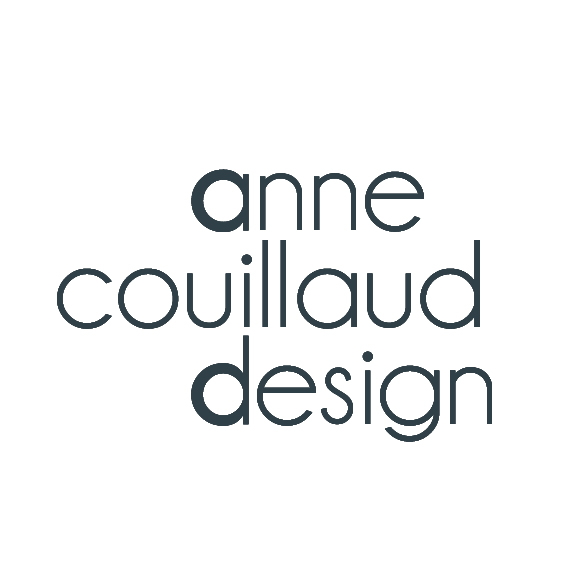Project context
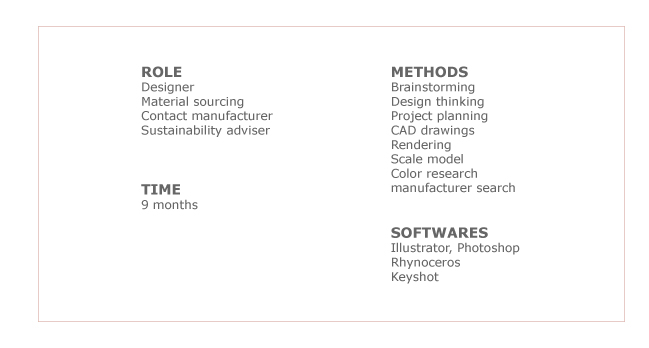
Context
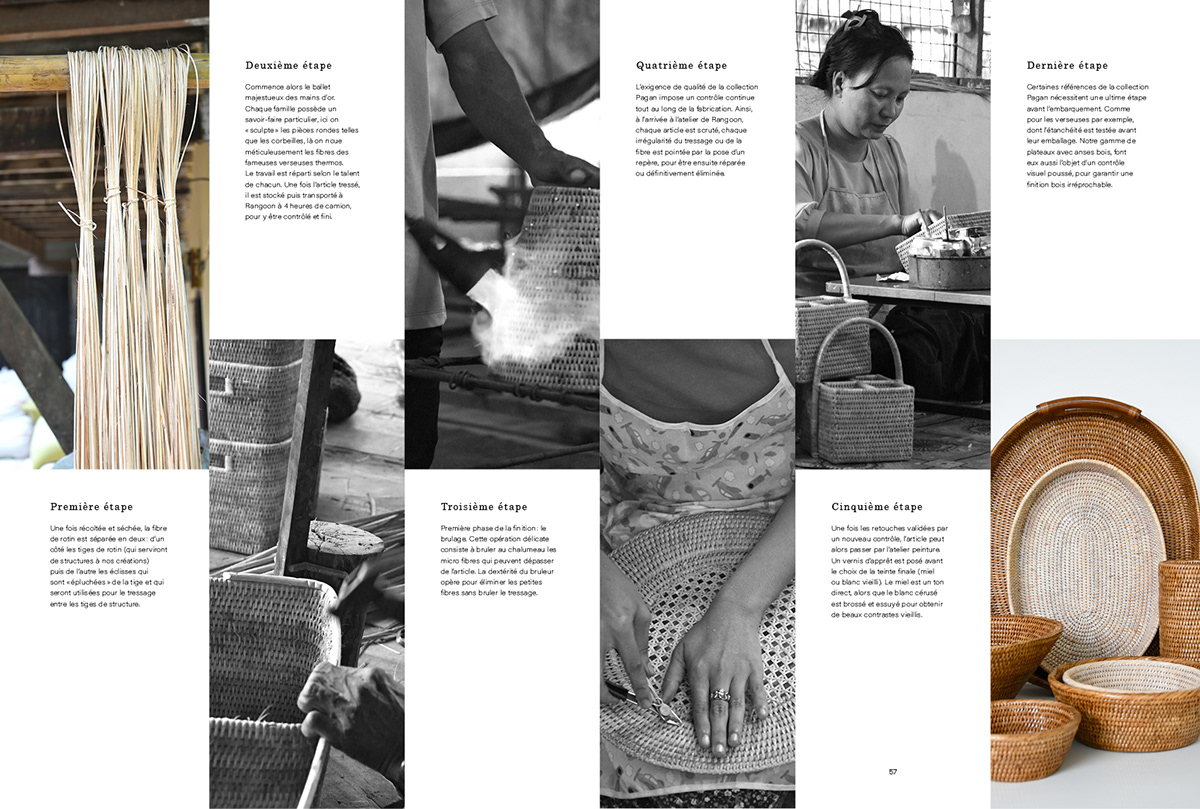
The client is a manufacturer of woven rattan home furnishings. The whole range of products from bathroom, kitchen and storage furniture is traditionally made in Myanmar.
The client approached me with the aim of modernising the existing collection. The major constraint was to provide a quick proposal, because a meeting with the craftsmen in Myanmar was scheduled one month later. The deadline being very short, it was first decided to revisit a placemat.
Le client est un éditeur d'objets pour la maison tressés en rotin. Toute la gamme de produits allant de la salle de bain, en passant par la cuisine et le mobilier de rangement est fabriqué traditionnellement au Myanmar. Cette marque fourni principalement des hôtels de luxe, mais parfois aussi une clientèle de particuliers.
Il a fait appel à moi dans le but de rajeunir sa gamme. La contrainte majeur était de fournir une proposition rapide, car une rencontre avec les artisans au Myanmar était prévue un mois plus tard. Le délais étant très court, il a donc il a été décidé dans un premier temps de revisiter un set de table.
Moodboard
I researched similar products, the trends and gathered information about traditional wickerwork. The idea of combining woven rattan with another material emerged.
Ceramic, glass, bioplastic or recycled plastic... At this stage the choice was still open. However, it was interesting to target materials that contrasted and enhanced rattan.
Après une recherche sur les produits de la même gamme et sur les tendances cette année là, l’idée d’associer le rotin tressé à un autre matériaux s’est imposée. Céramique, verre, bioplastique ou plastique recyclé...A ce stade le choix était encore ouvert. Il était toutefois intéressant de cibler des matériaux, qui contraste et valorise le rotin.
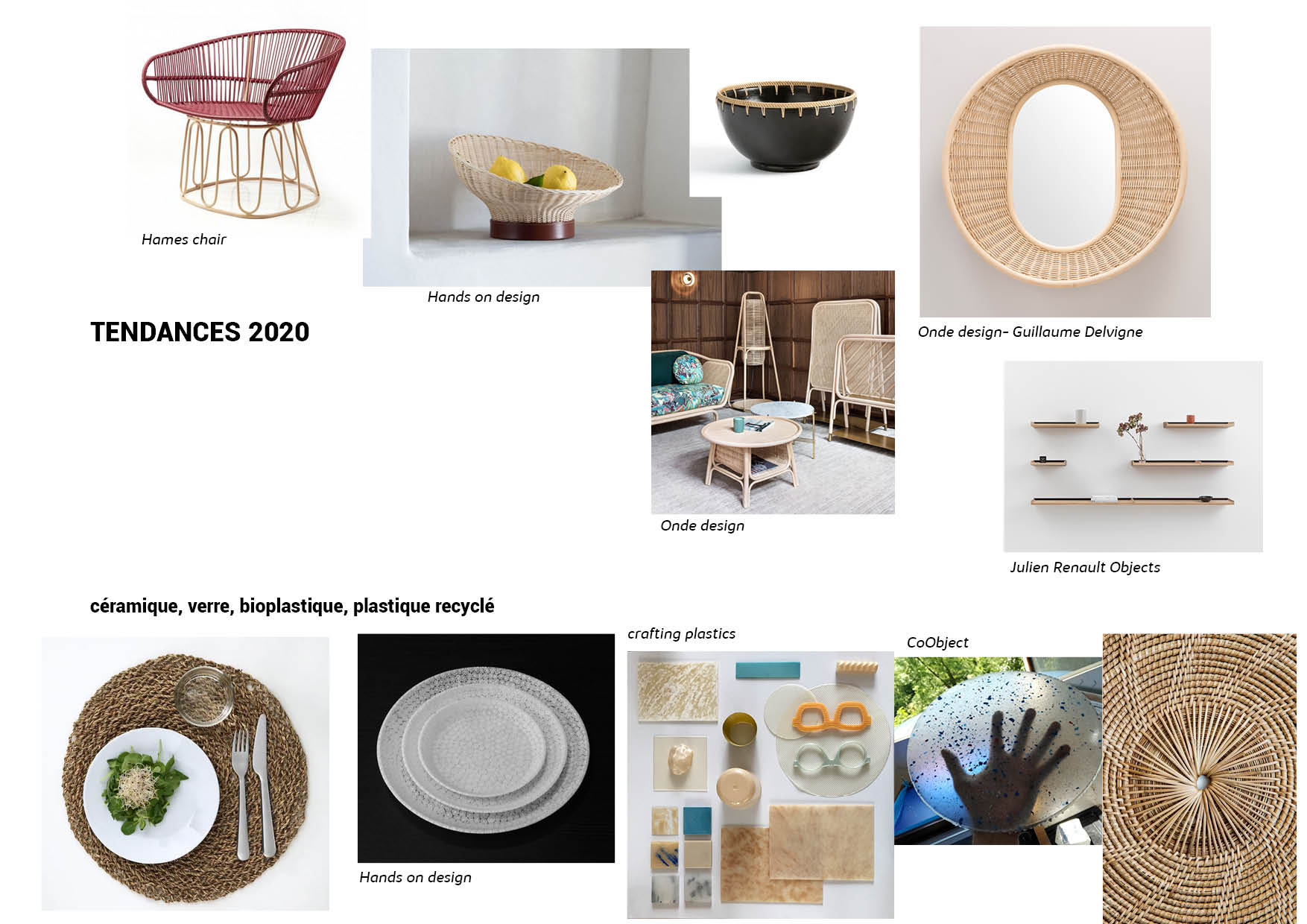
sketching

On these sketches, the idea was to insert plastic scraps, to play on the transparency or the transitions between the two materials.
I took care of quickly making a first prototype in PMMA by a local contractor from Lyon. The prototype was ready in time for the visit to Myanmar.
Sur ces propositions, l’idée était d’insérer des chutes de plastique, de jouer sur la transparence ou les transitions entre les deux matériaux.
Je mes suis occupée de faire fabriquer rapidement un premier prototype en PMMA par un entrepreneur Lyonnais local. Le prototype a pu être prêt à temps pour la visite au Myanmar.
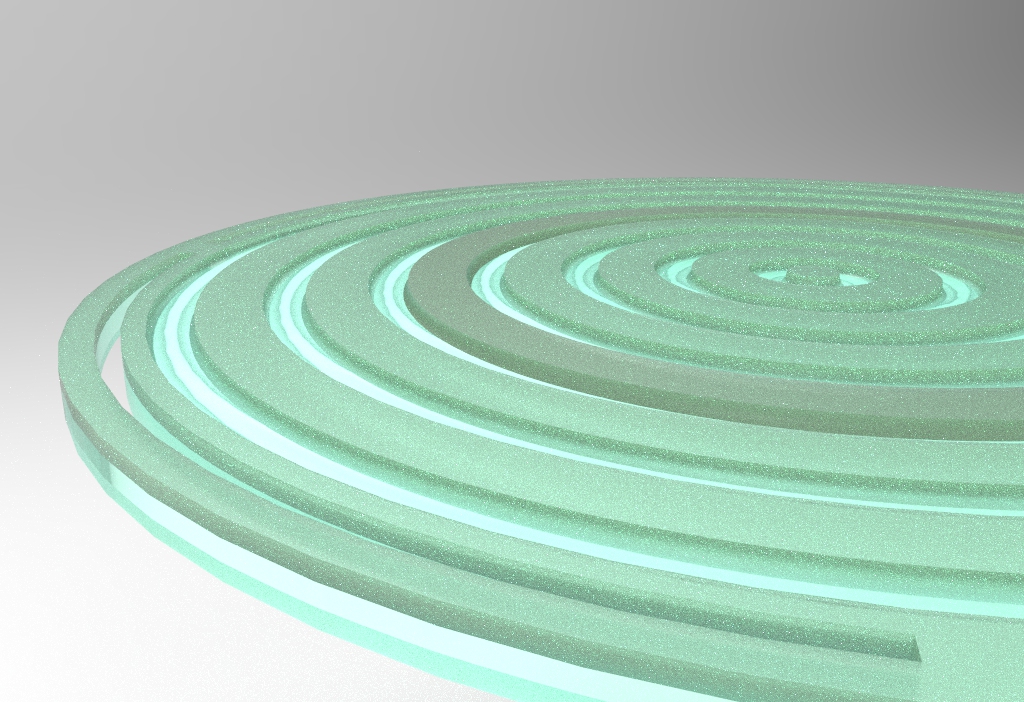

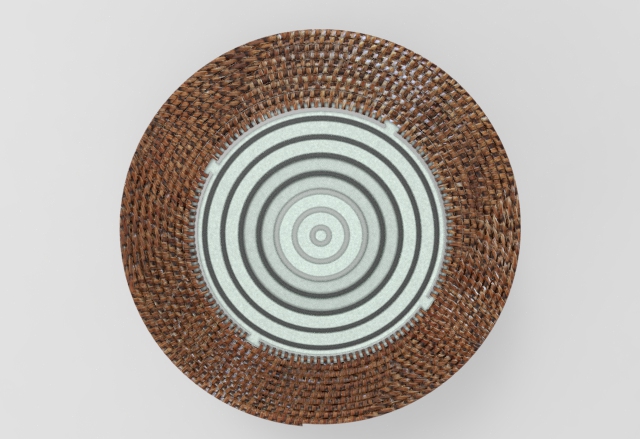
Color
I then made several color proposals for a range of colors for the Honey and White Rattan. Meanwhile, my client was able to present the prototype to his own customers and received positive feedback from them...
J’ai fait ensuite plusieurs propositions de gamme de couleurs pour le rotin Miel et Blanc. En parallèle mon client a pu présenter le prototype à ses propres clients et en a reçu des retours positifs....
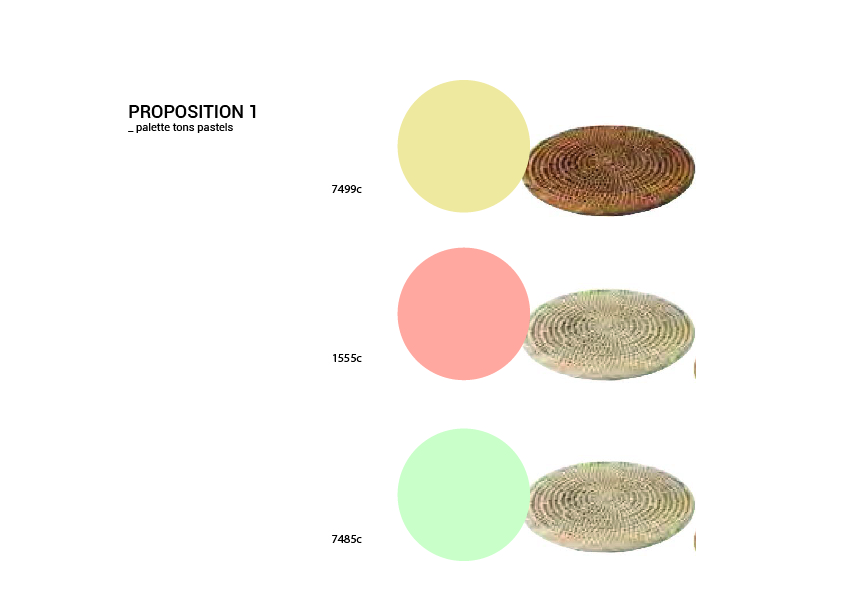
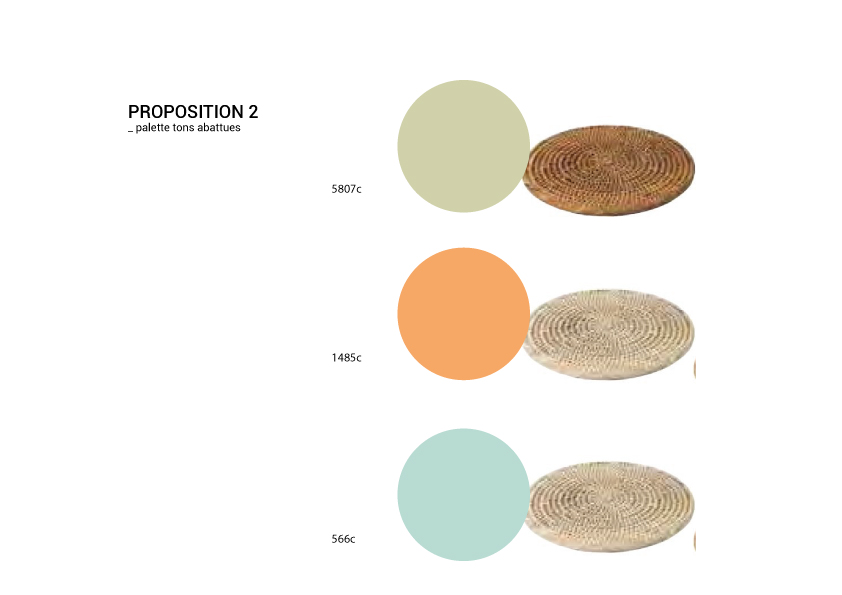
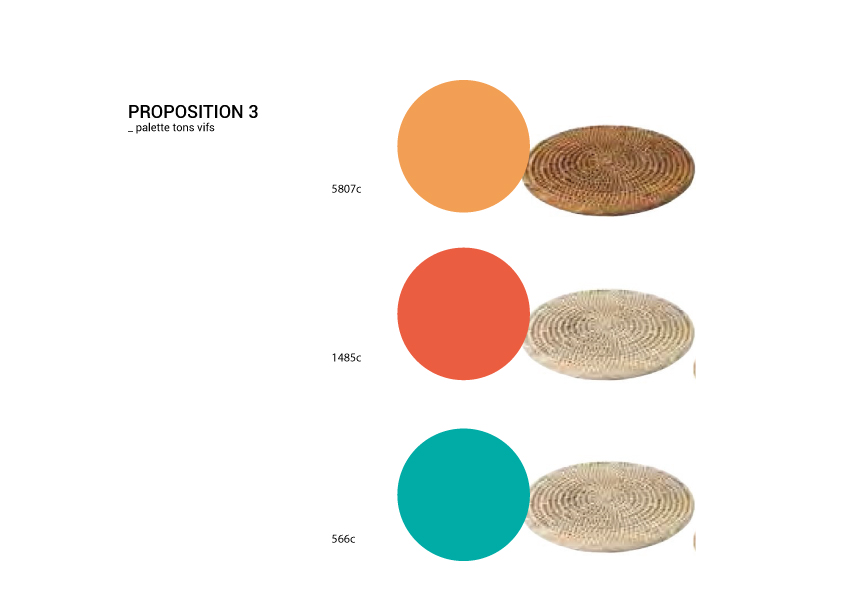
prototype


Ultimately, these prototypes could not be produced because of the health crisis and the extremely deteriorated political situation in Myanmar.
Ces prototypes n’ont finalement pas pu être produits à cause de la crise sanitaire et de la situation politique extrêmement dégradé au Myanmar.
After this first work phase, it was necessary to decide more precisely the type of materials to be used. Thus the industrialization of a small series. The manufacturing had to remain European, but it was also important for me to enhance the value of rattan by a material that was also environmentally friendly. Glass was our first option. I contacted manufacturers in France, Italy, Portugal and the Czech Republic. Unfortunately, the glass turned out to be too expensive for the quantity to produce and not profitable enough.
Since our placemat couldnot be produced out of glass I finally turned to a small company recently settled in Ardèche, CoObject, which produces 100% recycled plastic plates. This time the machining of our discs placed inside the woven rattan was within our budget.
Après cette première phase de travail, il a a fallu trancher plus précisément la question du type de matériaux et donc de l’industrialisation pour une petite série. La fabrication devait rester européenne, mais pour moi il était aussi important de valoriser le rotin par un matériaux également respectueux de l’environnement. Le verre a été notre première option, j’ai contacté des fabricants en France, en Italie, au Portugal et en République tchèque. Malheureusement après le retour des fabricants, le verre s’est avéré trop cher pour la quantité à produire et pas assez rentable.
Puisque le verre était hors budget Je me suis finalement tournée vers une petite entreprise récemment installée en Ardèche, CoObject, qui produit des plaques de plastique 100% recyclé. Cette fois-ci l’usinage de nos disques placés à l’intérieur du rotin tressé rentrait dans notre budget.
